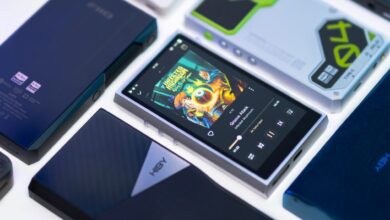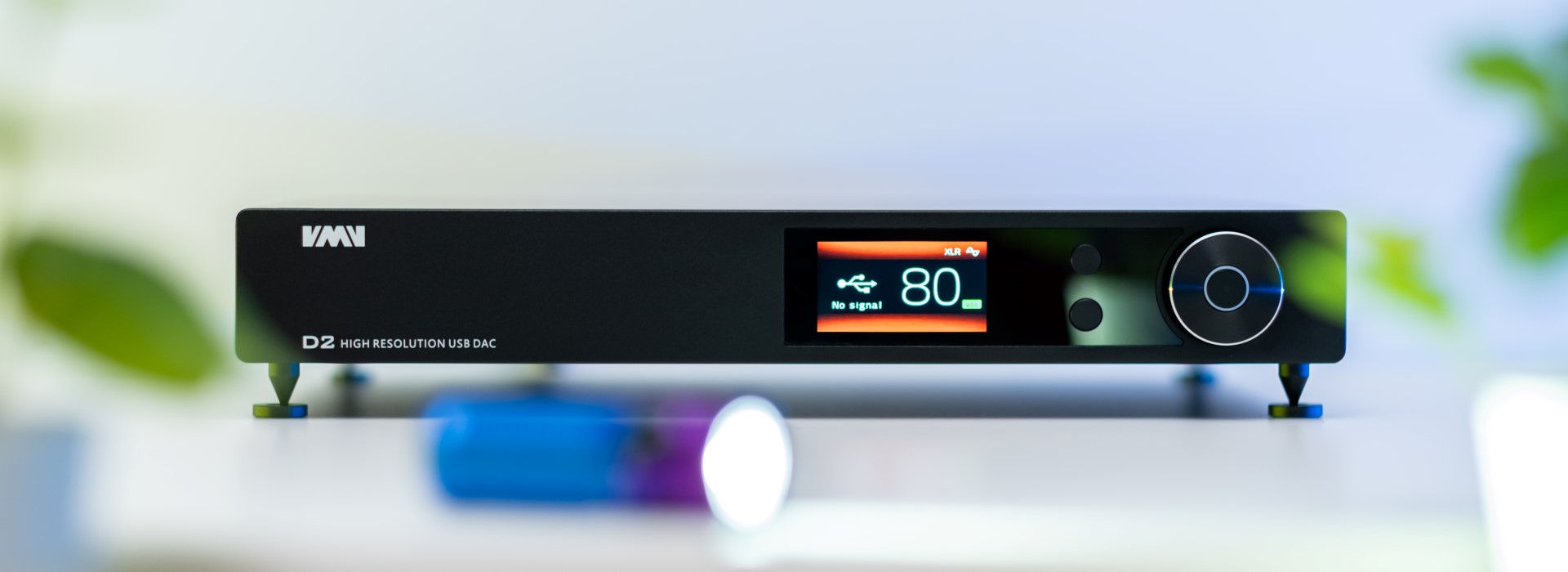
My Video Review:
It’s quite interesting to observe how most DAC manufacturers coming from China are fighting for supremacy when it comes to SNR, THD+N, Crosstalk and Noise Floor, when others are focusing their minds in creating unforgettable moments while listening to music. It saddens me knowing that sufficient DAC makers are falling into that trap, never listening to their creations, while bowing down to numbers appearing on a screen. I remember trying the most hyped DAC of this year, that was supposedly the most impressive one when it came to measurements, just to be let down by its soulless, dead-flat and boring attitude. That unit wasn’t making music, it was dead on arrival and I even asked if I could send it back without posting a detailed review.
Many such brands are already trend setters, as smaller companies are following the same course, cutting massively on component selection, trying to achieve a certain spec sheet, so it would still appear impressive on paper. Luckily, we aren’t listening to music with audio analyzers and there are numerous companies that wouldn’t release a single product if it doesn’t sound the way they envisioned it. I wish I will be writing today about a Rockna DAC, but that would be a story for another day.
Instead, I’ll write about one of the most interesting delta-sigma modulation converters that passed through my hands in 2021. It sounded in such a way, that I’ve completely changed my preconceptions about this particular brand. Everybody knows ShuangMuSanLin Technology by now or SMSL for short. I’ve covered most of their gear, starting with affordable and finishing with top-end units. Just months ago, I’ve learned that there is a sister company under their umbrella, calling themselves VMV Technology that releases only top of the crop that SMSL has to offer. One of their most valuable deeds was releasing a DAC that forced a new spin of competition among industry members.
When music started playing on their VMV D1SE DAC, everything that I’ve known about SMSL turned upside down. It didn’t sound like a regular ESS-Sabre converter that I’ve trialed so many times by now. It had more life in it, it had more weight, it punched harder into my chest and sounded considerably more engaging to anything I’ve tried from them. Just before dropping my D1SE review, I’ve checked their website once again and what a pleasant surprise, a higher-spec VMV D2 appeared on top that seem to improve every single component to the next level, while drowning noise levels into the abyss. The moment I’ve seen three distinct chambers carved in its CNC machined case, one for power supply, one for its digital section and one for its analog stage, I knew that I will be dealing with something truly special.
This shouldn’t come as a surprise to anyone as VMV Technology together with SMSL already joined the spearheads that are pushing this industry forward. They were the first ones that included a full-MQA decoder with their M500 DAC some two years ago and they were the ones that licensed the best Bluetooth codec (UAT) to be used in a desktop component. Their latest and the greatest VMV D2 DAC needs no introduction whatsoever, as it’s their best attempt at high-end audio, while trying to stay reasonable priced. It goes for $1699 in the USA and €1599 in Europe and as a statement product I won’t pardon any flaw that might arise.
As usual, I will be conducting a comprehensive review in a headphone and speaker-based setup and I’ll compare it to its younger sibling D1SE much later on. Before I move on to sound impressions, let’s unbox it and check what’s inside.
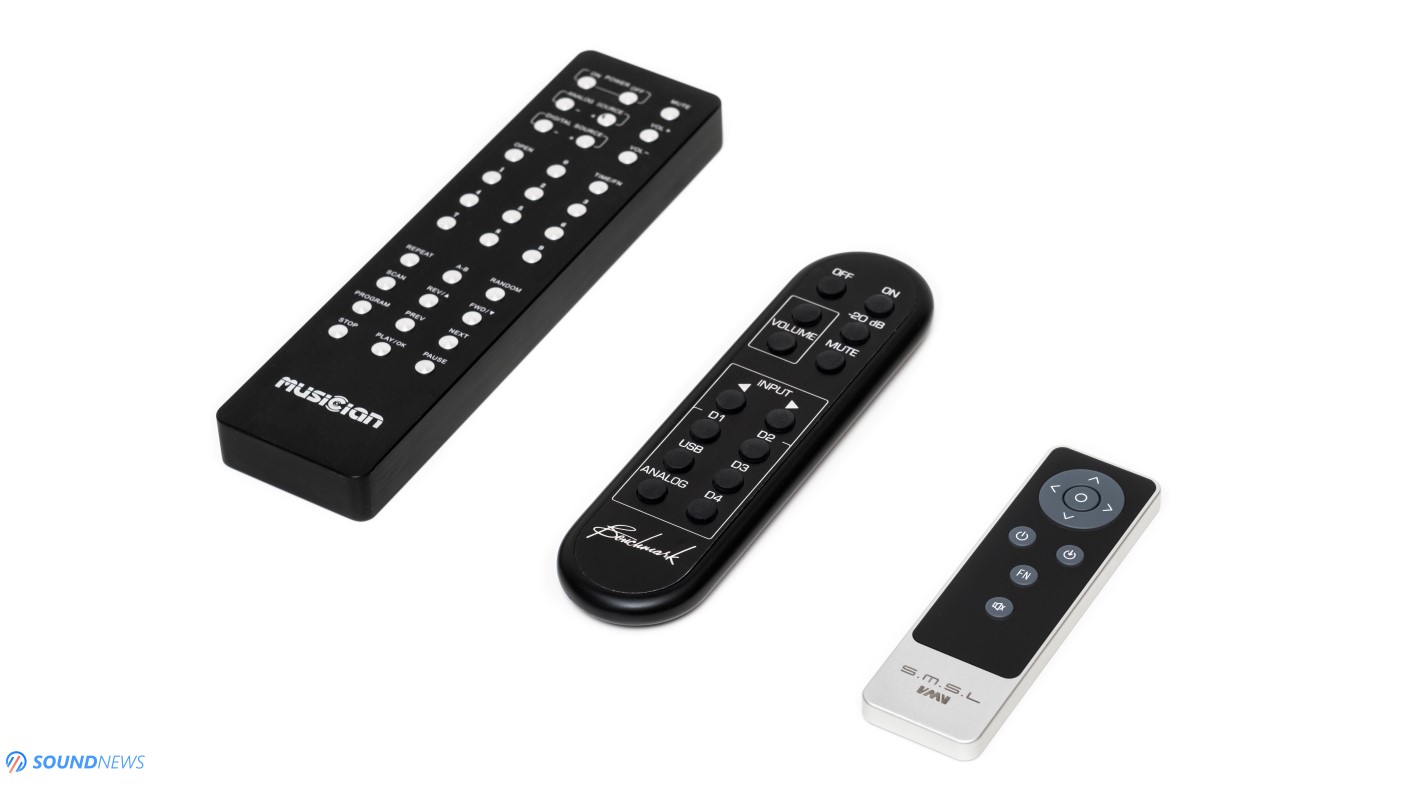
Package Contents
As it was the case with D1SE, SMSL prepared a different unboxing experience. They used a much thicker card-board box with a big VMV logo stamped on it. Double boxed is the usual affair, as it should be with devices at this caliber. After opening it up, it was clear that again, I’m dealing with a top-class SMSL DAC. Just look at that big and colorful user manual, the unit itself is looking by orders of magnitude nicer to anything they’ve done before, it has nothing in common with SMSL units I’ve tested in the past. Its case is milled on a CNC machine, it’s rounded, there’s a colorful screen and look at gorgeous remote-control that looks more like an Apple designed remote. D2 as its smaller sibling are scoring huge points when it comes to unboxing experience.
D2 is coming with several screw type metal spikes, you’ll find four of them that elevates it by 1 cm from the ground and two taller ones that will elevate it by around 1.5cm. Besides this, you’ll find a Bluetooth antenna, a USB Type-B cable and a power cord to kick-start your listening experience.
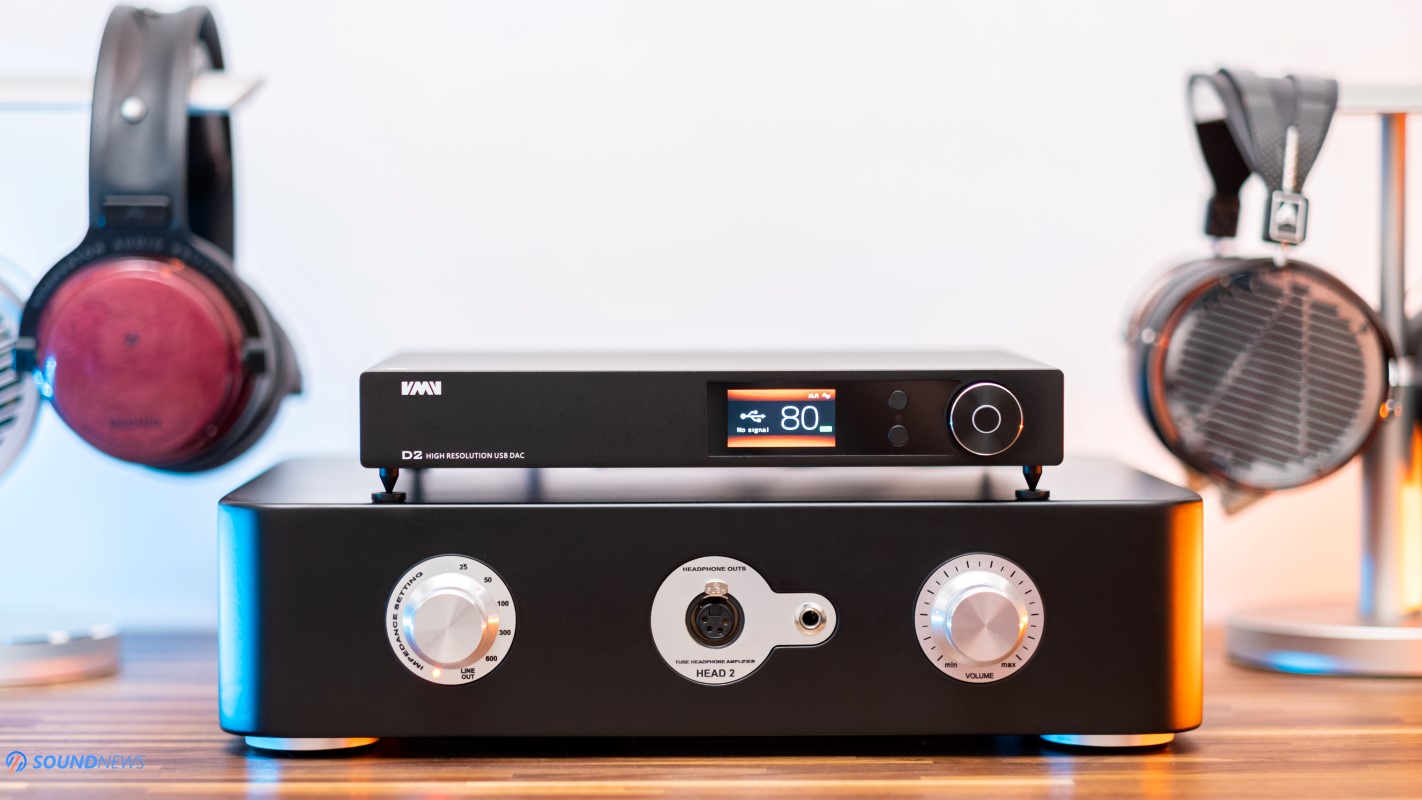
Design & Build Quality
I have complained a lot about their past designs, over and over again, but that is no longer the case, as no matter from what angle I’m looking at, D2 just screams high-quality craftsmanship, choosing simple, yet beautiful design choices. SMSL put a much bigger accent on the tiniest details, crafting a clean looking device that carries smooth lines and rounded edges, all made from higher-grade materials. D2 doesn’t use a simplified metal case, this is a full metal jacket that is wrapping it entirely, carved from a single block of aluminum. There is just a single metal plate attached underneath, making it the second uni-body design of SMSL.
I like matte-black everything and it seems that SMSL also likes that option, choosing this color scheme and discarding all others. They powder coated it with a fine grain paint that should help it against scratches and accidental drops. VMV and D2 lettering seem to be laser engraved, adding some high-end flair to it. It’s 1.9” LCD screen is protected by a layer of tempered glass for a longer service life, I find it big, it’s easy to read and bright enough to be used in the living room.
You can place it directly on your table or you can add four metal spikes by screwing them in with your bare hands, you can tilt its face-plate a little with taller spikes, but I don’t see the point in doing that. They’ve added four metal discs with inlays pooled to one small point of contact. This creates maximum pressure to the underlying surface, which eliminates all disturbances as micro-vibrations coming from its electronics.
I can’t say a single bad word about its build quality, it is really well-made, it’s built at higher standards, it’s isn’t overly large, but at 3 kilos (6.6 lbs) it feels solid and quite heavy. Its heavier case tells me that big transformers are sitting in there and that thought alone makes me quite excited. Thanks to its slim profile case, you could place it in tight spaces, in a killer headphone or loudspeaker setup, you can hide it just below your TV, gaming console or Blu-ray player.
All in all, no matter where I’m looking at, I see a higher attention to the smallest details and a lot of care.
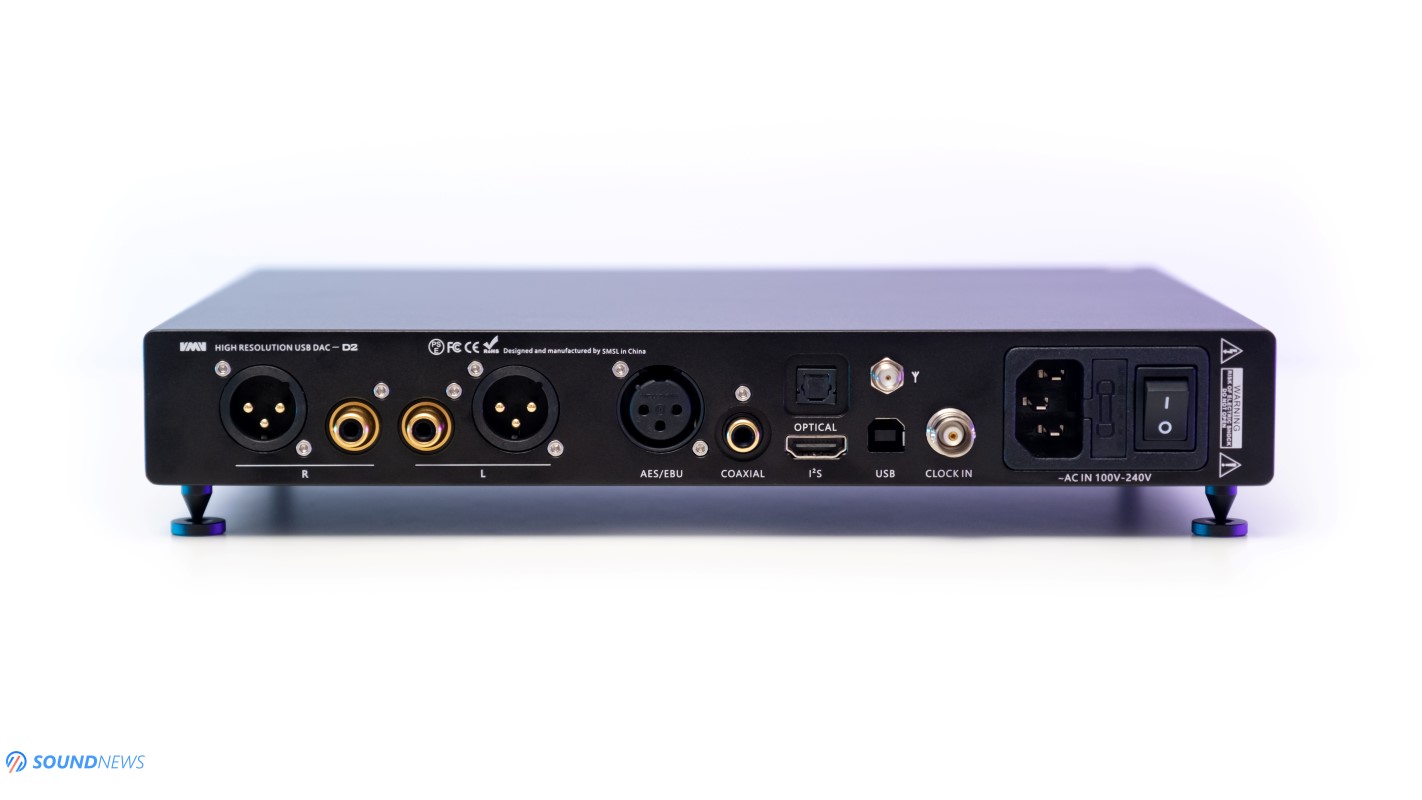
Controls & I/O
A big portion of its face plate is surrounded by a sheet of tempered glass, under it they hid its infrared sensor and of course that beautiful LCD screen. To its right there are two buttons that lets you choose 6 digital inputs and the one below it lets you choose your desired output. Its volume knob doesn’t wobble, it offers a decent physical resistance and it doubles as a menu navigator. It’s easy to use and you can access all its features from there or better yet – you can use its metallic remote from afar.
On its back, all the nicer digital inputs are present as: USB, Optical, Coaxial, AES, I2S, there’s an external clock input and a Bluetooth antenna socket. Being a fully balanced DAC, it offers a pair of XLR and RCA outputs. Both are volume controllable or fixed, depending on the settings and you can even disable a pair of analogue outputs if you will. At the end of the day, you can’t get a better connectivity than this.

Menu Options
This is by far the most complex user interface I’ve seen on SMSL devices, all its features can be controlled via its remote control or volume knob that doubles as a joystick. In the stand-by mode a single press on the knob will power it on and another press will enter its menu where you can select:
- Input – USB, Optical, Coaxial, AES, I2S or Bluetooth
- Outputs – All Normal, XLR Normal, RCA Normal, All Inverted, XLR Inverted or RCA Inverted
- Clock Mode – Normal, External (USB), External (ALL) – Selects its internal clock or an external clock generator
- Clock Frequency – 10, 11.2896, 12.2880, 16.9344, 25, 27, 33.8688 MHz or 256 fs (Auto) – if you own a clock generator, please select its working frequency
- SPDIF Mode – Normal, Processor
- PCM Filter – you can select your desired digital filter that are built-in directly in the DAC chip itself, there are 6 filters to play with, but the sound difference is slight at best.
- DSD Filter – Narrow (37 kHz) or Wide (65 kHz) – for the most natural sound choose the first option, for the most extended sound choose the latest
- PRE Mode – Volume Variable or Fixed, if you will be using it as a DAC only device, leave it at Fixed.
- I2S Mode – Normal or Inverted
- I2S DSD Channel – DSDL = PCM Data or DSD L = PCM LRCK
- I2S DSD FLAG – Pin 15 or Pin 14. For points 9, 10 and 11, please check its user manual if you are willing to try a few DDC converters or wireless streamers via I2S input
- FN Key function – Switch XLR / RCA, All Outputs or Bluetooth, it’s self-explanatory
- Dimmer – Dims its display from 5 to 60 seconds, OFF position leaves it powered at all times
- Brightness – 6 positions, lowest one is almost dimming it completely
- Reset – Goes back to factory settings
I’m a little sad that SMSL dropped Sound Color option that was making waves on D1SE, on a positive note D2 offers more flexibility with inputs and outputs.
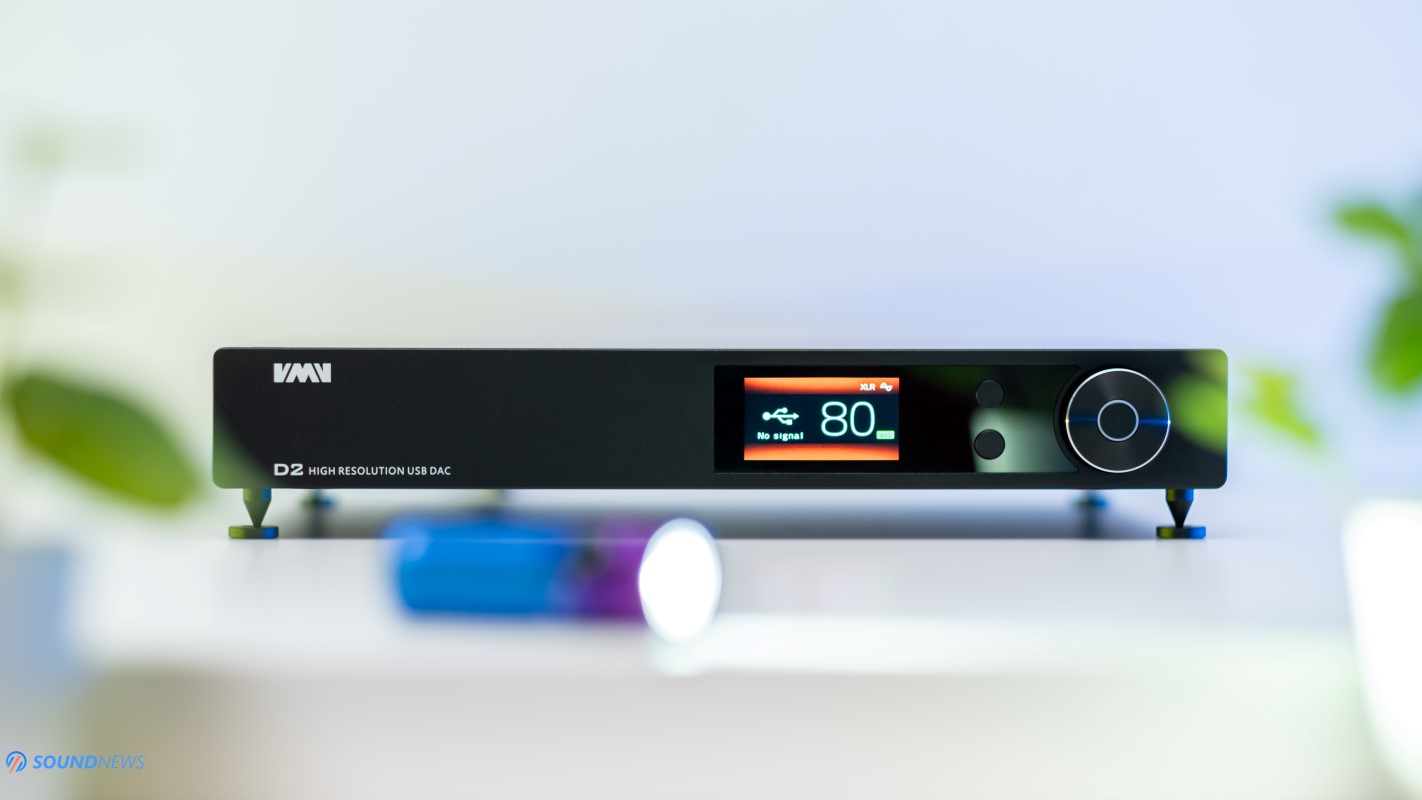
Tech Inside VMV D2
When I’m getting new toys to play with, I would always pop their hoods, as good audio starts with good PCB design and component selection. I would follow their signal path, finding some cool ideas, simplified/overkill digital or analog sections, sometimes small mistakes, but always suggesting a few things. Opening it up was a difficult task, as several ribbon cables are holding its PCB in place, so I took just a small glimpse of what’s inside. Carving three rooms in its aluminum case, a huge one for its power supply section, one for digital and another for its analog section, already suggests that SMSL went slightly overkill with this one.
First and foremost, high-end audio starts with an outstanding power supply design, kill its noise at the inception, until it becomes a bigger burden down the road and that’s exactly what they’ve done with D2. SMSL added an IEC filter that conditions the incoming AC voltage, a filtering stage follows and then a huge surprise: two audio-grade transformer from Noratel. A separate one for its analog and digital sections. As a small detour, I’ve had a single Noratel transformer in my former Matrix Audio X-Sabre PRO ($1700), I have one in the Matrix Audio Element X ($3400), another Noratel in the Plixir Elite BAC400 ($1600) passive power conditioner and a huge one in the Elite BAC1500 ($4000). Obviously not all transformers are made the same, but the ones used inside D2 are very special, being used only in high-end electronics. DC power coming from its transformers is then rectified and filtered multiple times with Nichicon KG and Muse caps, followed by ultra-low-noise voltage regulators.
At the heart of its digital processing, stays a flagship and out of print AK4499 DAC chip. This is their best and most premium converter, sadly AKM Technology are no longer making it, making the SMSL VMV D2 a limited-edition unit. SMSL has plenty of experience with this particular silicon, as they used it in their M400 DAC, plus lower-grade AKM converters are sitting in their M200 and Sanskrit 10th MKII DACs.
Compared to their former flagship DAC chip (AK4497), the newest silicon doubled its pin numbers, die-size increased substantially and it’s their first silicon that outputs current instead of voltage. Since this is a quad-channel DAC, a single piece is enough to create a fully balanced signal, but a precise I/V (current to voltage) conversion stage needs to be built around it. For that SMSL used several OPA op-amps that are known to be on the warmer and smoother side of neutral. Its analog output stage was built around two OPA1612 dual op-amps, suggesting that D2 is indeed a true-balanced design.
SMSL used higher-grade Accusilicon AS318 femtosecond clocks compared to the ones found on D1SE, that should extract the last drop of performance out of its D/A conveter. Thanks to the newest XMOS XU-216 interface that takes care of the USB input, to its higher processing power (2000 Mips) and RAM size, D2 is capable of decoding and unfolding natively MQA material. It can fully unfold MQA files stored on your PC or played back via streaming services, as Tidal for example. Be warned that it’s hardware MQA decoder works only via USB input.
There’s a Bluetooth receiver on board that supports the nicest Bluetooth codecs available right now as SBC, AAC, AptX, AptX-HD, AptX-LL, LDAC and UAT. Its antenna works as a wireless signal booster and its operating distance should be around ~10 to 15 meters, depending on how many walls are in between the sender and receiver (D2).
All in all, SMSL used highest-grade components to anything they’ve done before, some of the best transformers in the industry, higher-quality crystal clocks, audio grade capacitors and the best DAC chipset and. My ears started itching as I’m expecting some wonderful things coming out of it, so what are we waiting for? Let’s hit some eardrums!
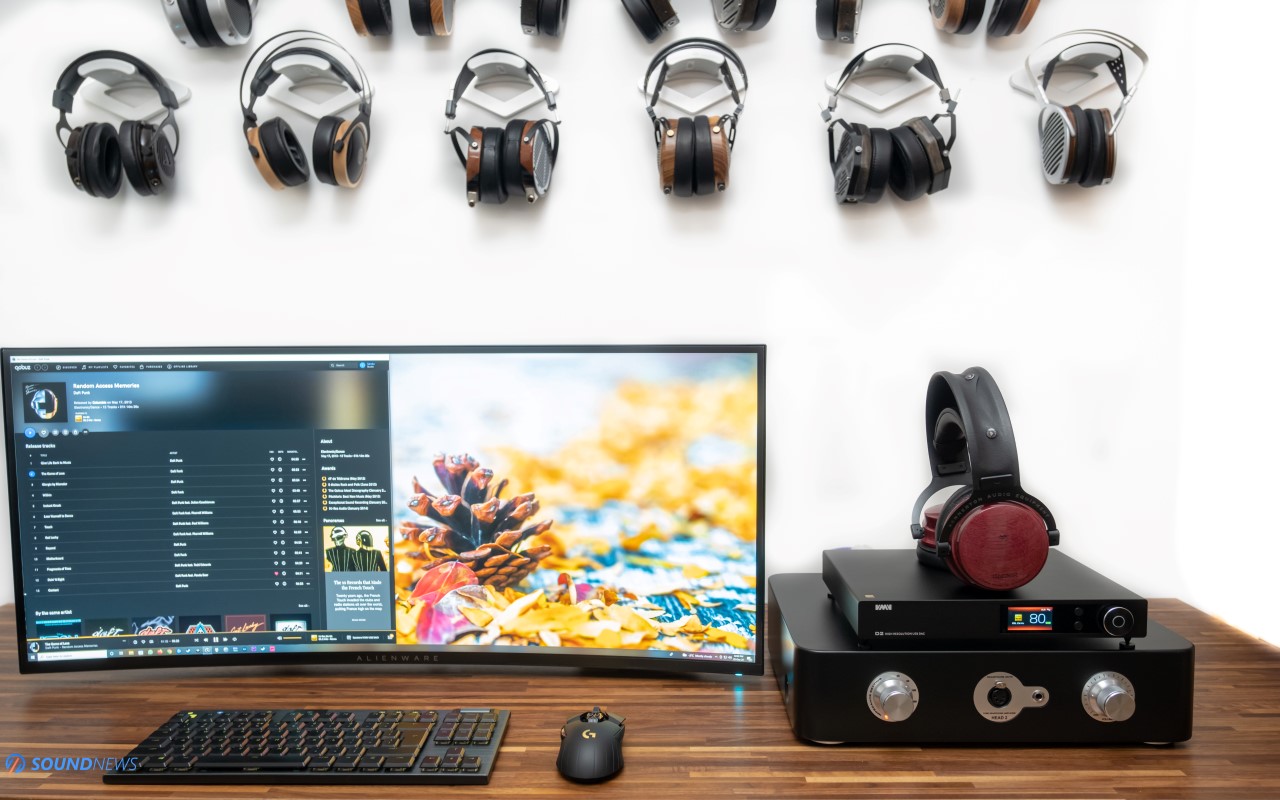
Sound Performance
I. Preliminary Impressions
Some of you already know my insatiable desire in trying as many digital to analog converters as possible and I’m glad I’ve put my hands on D2, as there’s a possibility of replacing my Matrix Element X as a DAC only unit, due to its different way of dealing with my music. Some of you use EQ to counterbalance the issues of your setups, some use hardware tone controls, maybe some fancy audio cables, but I’m changing the voicing of my music by swapping digital to analog converters. Some believe in immaculate measurements and I’m not blaming you for that, as SNR and THD readings are still very important. However, there are several things an audio analyzer cannot measure and I can assure you that two DACs that are measuring the same but use different components, would sound different down to the smallest details. DAC makers are pinching pennies when it comes to component selection and I understand that hitting a certain price point is extremely important. SMSL does that too, they have tens of units in between $100 and $3500, offering lots of flexibility for potential buyers. Take their newest SU-9N as a very good example, it’s a marvelous sounding DAC at its list price. It measures more or less the same with D2, but it can’t deliver the same engagement factor that D2 is sending while listening to music. There aren’t big differences when it comes to measurements, yet, there’s a sea of a difference when it comes to sonics, tonality, dynamics and pure enjoyment factor.
Long story short, VMV D2 has the potential of winning my best DAC award of 2021, simply because I couldn’t detect serious flaws or bad design decisions. Component selection is flawless I believe those Noratel transformers, Nichicon KG, Fine Gold and Muse ES capacitors (which are literally some of the best caps in production right now) added a lot of weight, substance, a good flow, an open and wide soundstage, that I can’t get from entry to mid-level converters. SMSL didn’t economize with this one, I don’t see compromises and it really shows after pressing that play button.
Several companies are putting an expensive DAC chip into a metal cage, surrounding it by questionable components and praying for the best, but that is not really the case in here. The whole CNC cage is carved in such a way that its power supply would never interfere with the rest of the electronics that are staying in their own rooms. If I would complain a little, I would replace those OPA op-amps with fully discrete components, but that would push its price point above the $2K mark and nobody wants that. D2 is so far the most organic and life-like sounding DAC I’ve heard from the house of SMSL and it’s one of the best DAC’s I’ve heard this year. Its frequency response feels complete top to bottom, there is as much treble and sub-bass definition, everything feels crisp and clean sounding, musical notes aren’t hitting a barrier anymore, those are flying far and wide being stopped only by record’s quality. There’s more energy in the midrange that made it stand out with acoustic music, there is more flow to it, resembling the sound of Audiobyte’s HydraVox. Interestingly enough, all the usual suspects I’m hearing with mid-level converters aren’t lingering inside this one. I didn’t experience unnatural treble peaks or over-sharpness filters that highlight strong leading edges. It is weird writing this down, but I find it exactly as detailed as my top dog $3400 Matrix Audio Element X, while sounding a bit livelier and more engaging in the long run. My actual setup is squeezing the last drop of performance out of it and it felt like combining the good parts of a well-made R-2R ladder DAC with the cleanness and precision of chip-based delta-sigma converters. D2 has it all, starting with micro-details and finishing with goose bumps, there is definitely an added weight down low and in the midrange. When soloists are arriving at their crescendo, the sound literally explodes with dynamics…something that is rarely happening with smaller converters, that can’t deliver higher dynamics with such an unstoppable force.
When it’s smaller sibling VMV D1SE finished its burn-in cycle, I’ve immediately felt a higher sound density to my former ESS-Sabre converters, it added more weight and saturation and the same is happening with VMV D2, but this time around at a higher degree. All that was smooth and vivid, feels more intense and alive, literally begging for more music to be added into my playlist.

II. VMV D2 in a loudspeaker setup
D2 can work as a pure DAC bypassing its volume control followed by an integrated amplifier and it can work as a DAC and preamplifier combo. While it doesn’t use analog relays, a high-performance stepped volume attenuator or top-class digital volume controls like Burr Brown’s PGA2311 or NJR’s Muses 72320, its low noise-floor and low output impedance worked to its advantage when I connected two power amplifiers directly to it. SMSL isn’t specifying its output impedance via RCA and XLR, but I’m pretty sure it stays somewhere in between 100 and 200 Ohms, making it work as a passive preamplifier, never limiting the signal intensity. Luckily, its voltage output can reach as high as 5.2V via XLR, that is slightly higher to the industry standard 4V, working as a small boost for the amplifier that follows. What’s more interesting is that a slight voltage increase is having a beneficial outcome not only in a stereo, but also in your headphone setup, since the amplifier that follows will work less, thus slightly reducing total harmonic distortion. There are many amplifiers that were specifically designed to be used with higher voltages, including their own SP400 headphone amplifier that needs a higher voltage intake to arrive at its peak power of 12 Watts per channel.
Overall, I liked how it performed on its own in my living room and I didn’t feel the need of a Benchmark HPA4 or Topping PRE90 in between it and my power amplifiers. Truth to be told, D2 doesn’t have an actual line amplifier circuit inside, but it’s higher voltage output and low impedance design worked more like a passive preamplifier, tightly controlling the drivers of my speakers, sounding speedy and dynamic. When I moved it to my living room, its sound staging capabilities that stretched wide open were felt immediately, its smooth and liquid delivery made an appearance as well. I must say, it added just a bit of character of its own, making everything a little sweeter and denser sounding, like someone swapped it with a technical sounding R-2R ladder DAC. Unsurprisingly, after adding a dedicated preamplifier like Benchmark HPA4 into the mix, the sound didn’t change as much as I pictured. I was getting the same natural performance, defined and rumbling bass notes, plus an inoffensive but extended treble delivery. It seems that D2 is one of those DACs that aren’t improving with a dedicated preamplifier and that’s great news as I’ll be shortening the signal path by using it directly with my power amps.
KEF’s Reference 3 are prone to noise coming from the source and amplifiers, but all I’ve heard was a noiseless performance, with dynamics going wild in an effortless way. SMSL developed a matching integrated amplifier for it that is called VMV A2, but I really don’t get why it doesn’t carry XLR analog inputs. For the best results, please use your own balanced amplifier.

III. Detail Retrieval & Transparency
For unknown reasons, from the land of delta-sigma converters, those that had ESS-Sabre chipsets were undisputed champions when looking at your music with a magnifying glass. Matrix Audio Element X stood out as being extremely technical sounding, so much so that I couldn’t part ways with it for about two years in a row. It just pushed all details forward, as if trying to get the attention of the listener. AKM based DACs can do that too, but only the ones carrying a flagship AK4499 with top components around it. As I’ve mentioned before, component selection around the DAC chip is extremely important and I believe SMSL did an amazing job in here, squeezing a higher dynamic range, making it the cleanest sounding SMSL DAC to date.
Their D1SE was an exemplary DAC in this area, always highlighting the leading edges and the smallest nuances like it would be a child’s play and D2 goes with the same winning formula. If you’re crazy about your music on a micro-scale, then be prepared hearing the truth alone. With D2 on my table, I’m sure that the only limiting factors would be my upstream equipment, my amplifiers and transducers in a headphone or speaker form.
As it was the case with D1SE, D2 brings them forward quite naturally, without adding an over-sharpness filter on top. I’ve re-listened some of my old rock tunes that have grain and mastering errors, but those weren’t offensive or bothering anymore. VMV D2 is a brutally honest sounding DAC that would never rise brightness or treble intensity to alarming levels. Thanks to its fullness and life-like approach to music reproduction, I’m not only hearing the tiniest nuances, but I’m feeling them playing around my room.
Everyone likes discovering new things in their music and I’m always on the hunt for new information that’s buried deep. With D2 at my side, it wasn’t challenge searching for small details, shinning a light on everything that was hidden in the background, exactly how a top-class converter should do by default. Some D/S DACs that use less impressive components could sound tiresome when small details are brought to the surface, but D2 doesn’t have any of that. When DIO – Holy Diver (Qobuz / Tidal) appeared on my playlist, I was already preparing taking off the Hifiman Susvara and putting the Audeze LCD-4 in their stead, but lo and behold, D2 driving the Trafomatic Audio Head 2 completely dismissed the bright nature of this album. It brought a smile to my face as I could listen to cymbals and snare drums all day long, without lowering the volume or changing the headphones. D2 provided an impressive transparency and I could look deeper into my tracks, analyzing the tiniest sounds that materialized in the background.
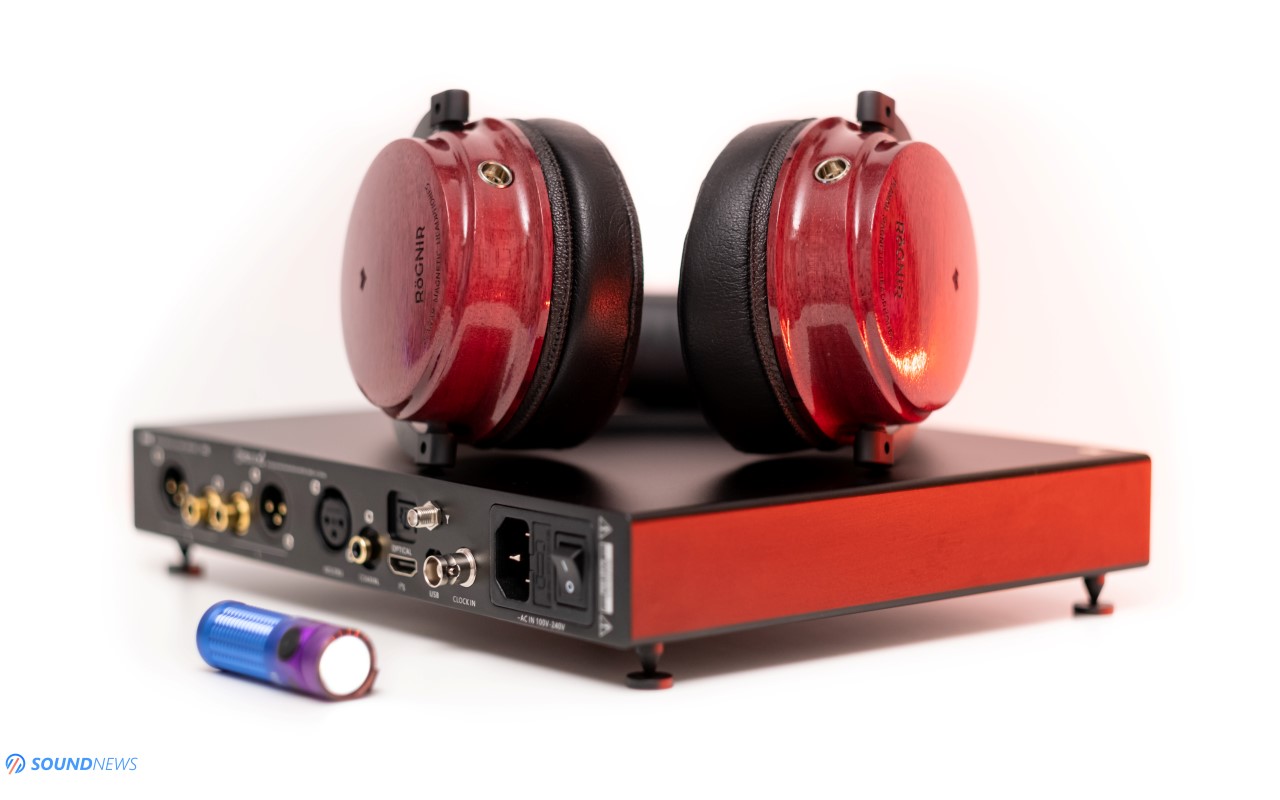
IV. Transient Response
A big majority of AKM-based converters didn’t impress much when it comes to speed, fast decays or delivering punchy bass notes. There was something that slowed them down by a little and looking behind all my DAC reviews, I don’t remember a single unit that would pound my chest with an incredible force.
Obviously, SMSL knows about such limitations and this is where some of the best transformers and capacitors came to play, leaving a huge mark over its performance, especially when it comes to fast transients. D2 presented quick shifts in dynamics, including fast decays of the notes. This thing accelerates like a sports-car and pounds like Mjolnir when bass notes are coming to play, but there’s something that made me even happier. Since transients are very important to me, I power all my DACs with a passive power conditioner from Plixir Power, it’s called Elite BAC400 that always added a bit more oomph, rumble and definition down low. Lower quality sources benefited tremendously from it and higher quality ones much less, as their power supplies were already good enough. With D2, it doesn’t matter if it’s powered from the wall or from the BAC400, as it will sound absolutely the same and all the body hits I’ve experienced with it in my stereo will be felt by you too. It wasn’t exactly as thumping and impactful as Gustard X26 PRO was in my setup (that thing was the pure definition of mean transients), but D2 wasn’t that far off, sitting on the same level with a Matrix Element X (which is also using a Noratel transformer).
I’m happy to report that SMSL didn’t limit dynamics in any way, as it sounded considerably more dynamic and alive compared to anything they done before. I remember calling their SU-9 engaging and fun, but boy, D2 rises my mood levels much higher, it felt speedier, more visceral and easily reached low or high intensity passages. With higher dynamic range tracks the difference was too obvious to ignore and from ~24 DACs that were reviewed in 2021, D2 is easily sitting in my top 3.
Since Infected Mushroom and Noisia are playing on repeat when I’m testing dynamics, I decided changing the pace a little and giving Igorrr – Spirituality and Distortion (Qobuz / Tidal) some well-deserved praise. A word of caution first, this is not your regular techno or drum’n’bass, this is like putting some pineapple, a California ripper chili, chocolate and raw meat on top of your Diavola pizza, whilst listening to Gojira. It’s certainly not for everybody, but if you like experiencing new stuff, broadening your musical horizon, please give it a try, but only before watching their Very Noise video. These guys are insane and unstable, but oh so original and different, never using patterns or choruses and never abiding by the rules of conventional electronic music. With D2 doing all the heavy work, I’m getting a higher dose of dopamine, never calming my right foot from hitting the floor, it’s impossible not to smile while digesting and trying to understand what is actually happening in their songs. D2 was hammering my eardrums like no other AKM based DAC was doing, it was both painful & pleasant and this is exactly how I want all my DACs to sound in terms of dynamics. D2 expresses music exactly as its makers intended, if it needs to sound raw and brutal, it will sound that way and if it needs to be gentle and easy-going, it will slow down and show the beauty of that music.
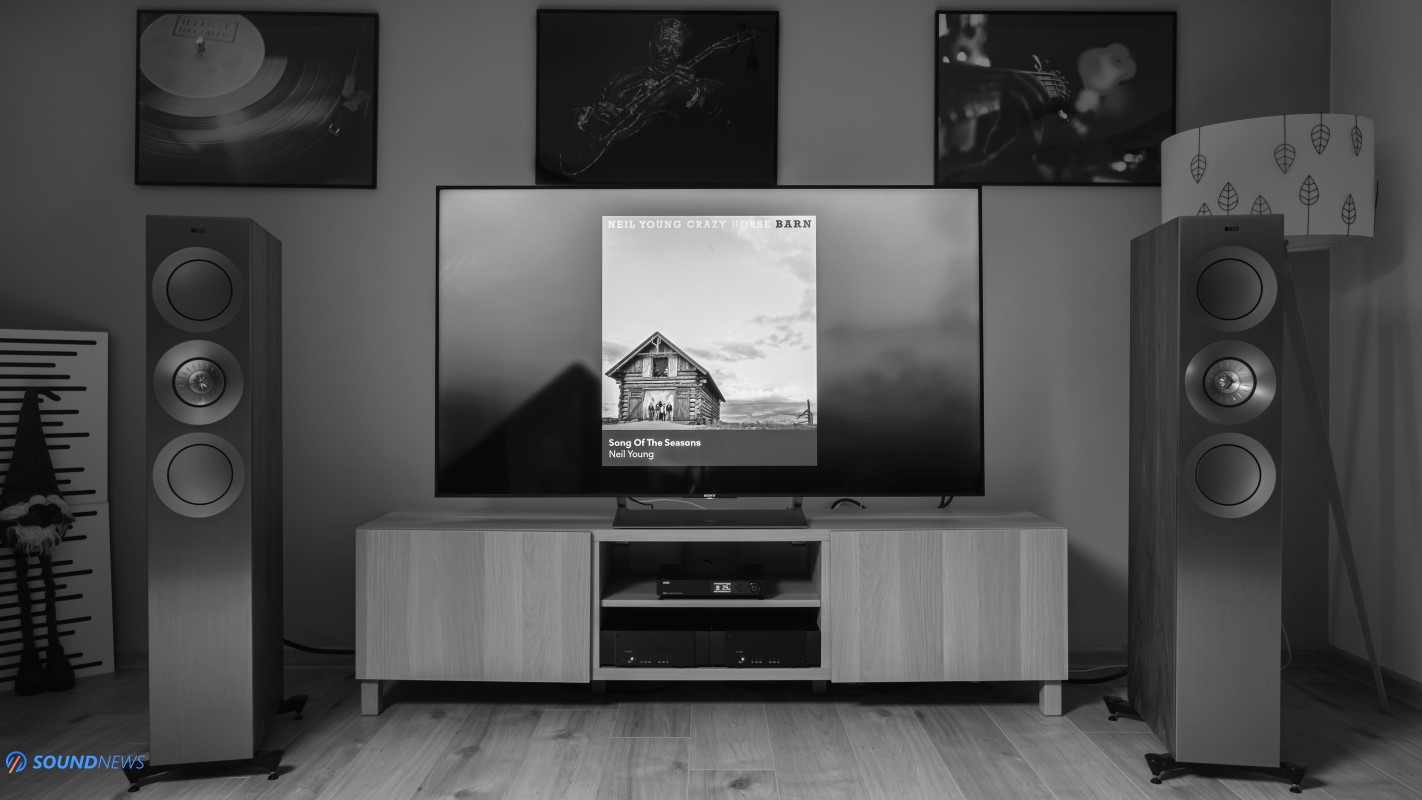
V. Soundstage & Depth
When people are asking me what would create a holographic experience in their living rooms without getting stand-floor loudspeakers, I would suggest getting dual-mono amplifiers, or a better digital source, usually R-2R creations that use an all-discrete output stage. For smaller pockets, I’m recommending AKM-based converters that will portray a bigger picture, expand the sound in all directions and put a lot more air in between the notes. Obviously, not every AKM design sounded impressive in here, but most of them did. As I mentioned before, D2’s component selection is top-notch and besides those op-amps sitting just behind its RCA and XLR jacks, I have nothing to complain about it.
My expectancy level with D2 was very high and it didn’t disappoint. I wasn’t surprised hearing my music traveling slowly around my room, hitting my body from different angles, like I had a surround system installed. Live records sounded as if I was there when music was recorded, expanding the listening space and broadening the sweet spot. What’s more interesting is that even crowded music like underground electronica didn’t shrink my listening spot and I could easily focus on anything in particular. It pushed me back a little, regardless of what music was being played and that was felt with speakers and headphones alike. Adding a Trafomatic Audio Head 2 and then a pair of open-back headphones felt like improving said headphones and making them just a little wider and deeper sounding. A weird effect at first, but a very desirable one much later on. I’ve observed that the usual listening fatigue that I’m getting from fast paced music is no longer happening, music wasn’t cramped inside my head anymore as it was floating around. Even if I’m enjoying the sound of their SU-9N and SU-8S, D2 was by a whole lot bigger sounding, it was an immediate change that carried over to every setup of mine.
D2 is a true balanced DAC that offers a lower channel crosstalk via XLR outputs and when I’m switching to a headphone setup, the left to right soundstage is increasing in size, simply because both channels aren’t interfering with each other as much as they are doing via RCA. That is a non-issue in a stereo setup for obvious reasons, but with headphones you don’t want the sound from one channel leaking to the other and that is precisely why XLR outputs are sounding wider in a headphone setup. I want to outline that D2 will not increase or decrease the stage size of your recordings, if they were meant to sound big, they will sound that way and vice versa.
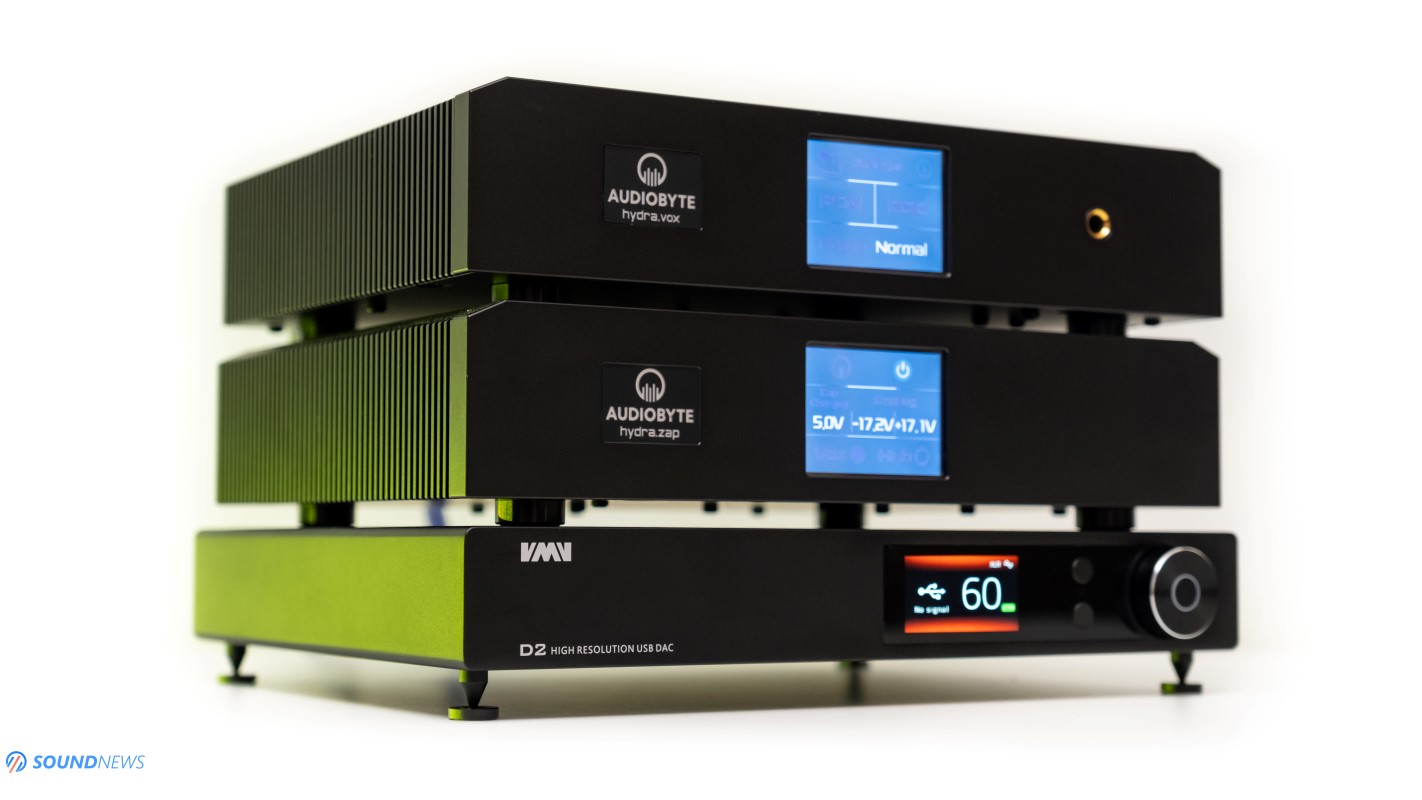
VI. Noise Floor
As usual, this will be a much shorter chapter, as most digital sources released in the last decade aren’t increasing the noise floor to alarming levels anymore. SMSL tried lowering the noise floor as much as possible with current technology, resulting in some of the cleanest sounding converters. Its smaller brother D1SE already had one of the lowest noise floors recorded on modern converters, but D2 smashed those records once again. Distortion dropped by ~13 times and noise floor dropped to just 1.8 uV, suggesting that in any configuration, the only limiting factor would be your amplifier or your speakers & headphones. Working as a DAC + Preamp combo driving two power amplifiers didn’t add disturbing noises at higher volumes. KEF’s UNI-Q drivers are quite sensitive to noise coming from downstream equipment, they can easily pick up residual noise from lower quality sources or amplifiers, but luckily that didn’t happen. As far as noise floor goes, it can’t get any cleaner than this, it was squeaky clean.
Attaching a Benchmark HPA4 and driving several pairs of ultra-sensitive IEMs and low-impedance planar-magnetic headphones didn’t ruin my listening session, as I couldn’t detect gremlins or background noises passing through. Everything was noiseless via headphones and loudspeakers alike. Even going louder to my usual listening volumes didn’t add a layer of veil, everything remained tightly controlled, clean and defined, without losing inner detail or crispness. It seems that I’m dealing with one of the cleanest sounding DACs I’ve tried, so no complaints in here.
Considering its impressive power supply design and filtering stages, I would be surprised hearing anything less than an immaculate performance in repelling all types of noise. Adding a cell phone on top didn’t add hum or hiss and all I’ve heard was a clean, undistorted sound.

VII. MQA & Bluetooth Performance
A. MQA Performance
D2 is coming with a full-blown MQA decoder that will unfold and decode MQA files natively, but there is a catch – it will work only via USB input. Forget about MQA via Optical, Coaxial or I2S. Even external DDC converters can’t help you with that.
I’m no longer listening to offline music for several years now, as all my reviews and comparisons were made via Qobuz or Tidal desktop apps. When it comes to high-resolution MQA streaming, there are only two services that are offering you such content: Tidal and Nugs.net. Once you’ll acquire a subscription, you’ll have access to a wide variety of MQA albums that are released on a weekly basis. These files can have a resolution up to 24-bit and 192 kHz, with the last bits of information stored in a lossy format. Technically, we’re aren’t dealing with lossless files and that is precisely why a native 24-bit 192 kHz file played back via Qobuz will sound by a hair better. Still, if MQA is your thing, VMV D2 locked on those files instantly and an MQA logo appeared on its screen. Don’t worry if you are seeing a blue or green dot next to the MQA logo, as in both cases it will fully unfold MQA files before playing them back natively. Before playing such files, I strongly recommend checking Pass-Through MQA in the Tidal desktop app –disabling software decoding and putting its MQA decoder to good use. Check Use Exclusive Mode and Force Maximum Volume for the best results.
It worked flawless with MQA files, it locked instantly on such content, playing them back without issues. It will lock by a hair faster on 44.1 kHz files due to their smaller size and that is perfectly fine. XMOS XU-216 is currently the fastest digital receiver (2000 MIPS) for MQA files, so D2 performed great with MQA content. Going back and forth between software and hardware decoding, there is a clear difference that hardware decoding sounds simply better. If you’re wondering what’s the difference: the frequency extremes felt richer with information, more defined and sharper sounding via hardware decoding. Bass ‘n treble felt clearer and more impactful sounding to me, while software decoding was smoother and too polite at times, hiding micro-details as if I switched to a lossy file. If MQA playback is important to you, then D2 passed this test with flying colors and I have no complaints here.
B. Bluetooth Performance
Its smaller brother D1SE performed good even at 15 meters away from the sender, thanks to its external Bluetooth antenna that worked as a signal booster, but its limited codec support seriously downgraded the final outcome. With D2, SMSL went much higher, arming it with every possible Bluetooth codec, including AptX-HD, AptX-LL, Sony’s LDAC and industry’s best UAT codec that can receive 24-bit 192 kHz files at speeds up to 1.2 Mbps. I don’t own a UAT enabled smartphone, mine does LDAC (0.99 Mbps) only, which was more than enough.
I’ve tried tens of portable and desktop DACs that are offering Bluetooth capabilities, but the ones that had an external antenna worked the best, never losing a beat even with 2 concrete walls in between the sender and the receiver. Long story short, D2 had a rock-solid Bluetooth performance and again two concrete walls didn’t pose a slightest problem for it, even from a substantial distance. Several meters away and the signal was still going strong and only when I moved to the balcony, with 4 concrete walls in between at around ~15 meters away, it started stuttering. I’ve tried as hard as I could in an open space, but I never lost its signal. BT connection was rock solid and it worked great in my case.
Sending music from my smartphone that was connected to streaming services as Qobuz and Tidal worked as a charm and LDAC codec sounded almost indistinguishable to its wired connections. Bottom line is that D2 worked well with all Bluetooth senders, but it performed better with those that support BT 5.0 and LDAC codecs.
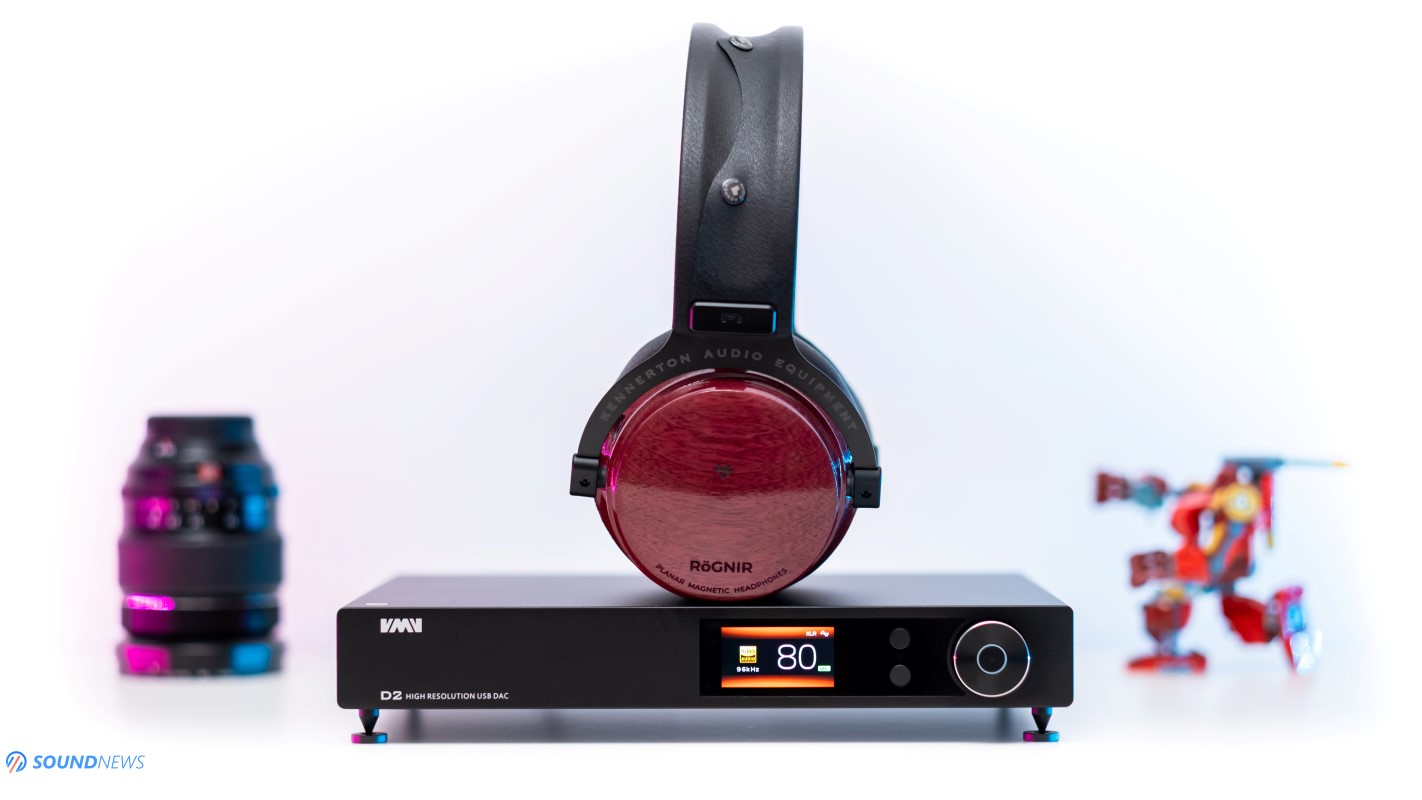
VIII. Frequency Response
A. Bass
From an army of SMSL converters that I’ve tried in the past, most of them delivered a speedy bass performance, decaying it in the same fashion, but when sustaining longer bass notes and delivering a punchy and impactful performance, I believe only their VMV D1SE provided those qualities. SMSL further optimized its power supply and that had a beneficial effect on its bass delivery. Its low-end can be described as weighty, a bit emphasized, but never shadowing the rest of the frequency response. I’ve felt an exemplary sub-bass that easily reached and maintained 20 Hz notes on Invisible Sun by The Prodigy (Qobuz / Tidal). There aren’t that many D/S DACs that are doing justice to the low-end, but D2 together with Gustard’s X26 PRO are leading the pack. Bass notes went down to subsonic levels, it rumbled and raised my mood. It didn’t feel like a deviation from linearity, but more like “this is how the low-end should be played and maintained”. If you love your bass unspoiled, detailed, but strong and authoritative, then D2 will be right up your alley.
B. Midrange
D2 stood out immediately with its catching warmth and richness compared to traditional delta-sigma converters. With D2, there was more flow and a denser body, improving my listening experience with all types of acoustic music. It was a little sweeter and weightier sounding in here, but it still offered a perfect balance between being technical and natural sounding. It oozed natural overtones, highlighting musical instruments and vocals more than anything else. Its midrange felt boosted by a little, adding something that made me listen to more music, without feeling discomfort or listening fatigue. There is definitely more definition and texture in here, even compared to top-class converters like VMV D1SE or D90SE by Topping. Even Gustard’s X26 PRO and Element X by Matrix didn’t feel as organic and life-like sounding to me…as if someone poured some R-2R magic over a delta-sigma modulation DAC. This is an outstanding midrange performance, that gained more body and became thicker sounding to usual delta-sigma converters.
C. Treble
D2 transitions to higher regions like putting butter on fresh toast, it does that slowly and smoothly. I can hear trebles reaching higher octaves, a good deal of nuances appeared in my tracks, everything felt defined and clean, without rolling-off anything in those regions. I’m into all kinds of music, including aggressive genres and I really cannot stand when cymbals or bells are becoming nasty, sharp and unnatural sounding. I like my cymbals precise and metallic, but never messing with their timing. A micro-second longer and they become tiring and unnatural. With D2, I’ve heard their shimmer, their beautiful bodies, their crashes felt visceral and yet…not a single sign of brightness. SMSL perfected their skills masterfully and you can easily rock-out with a D2 on your table without lowering the volume of your music. Leading edges were defined and precise, cymbals and snare drums hits were aggressive and alive. Double drums were perfectly executed, sending a nicer kick into my eardrums. It presented a clean and a detailed treble response, without adding digital glare or extra-ringing on top.
As a whole, SMSL VMV D2 presented a clear and an extended frequency response, never rolling-off parts of the frequency response. There weren’t drops or rises, just a complete rendition of the audible spectrum, delivering a fuller-bodied presentation to usual converters.
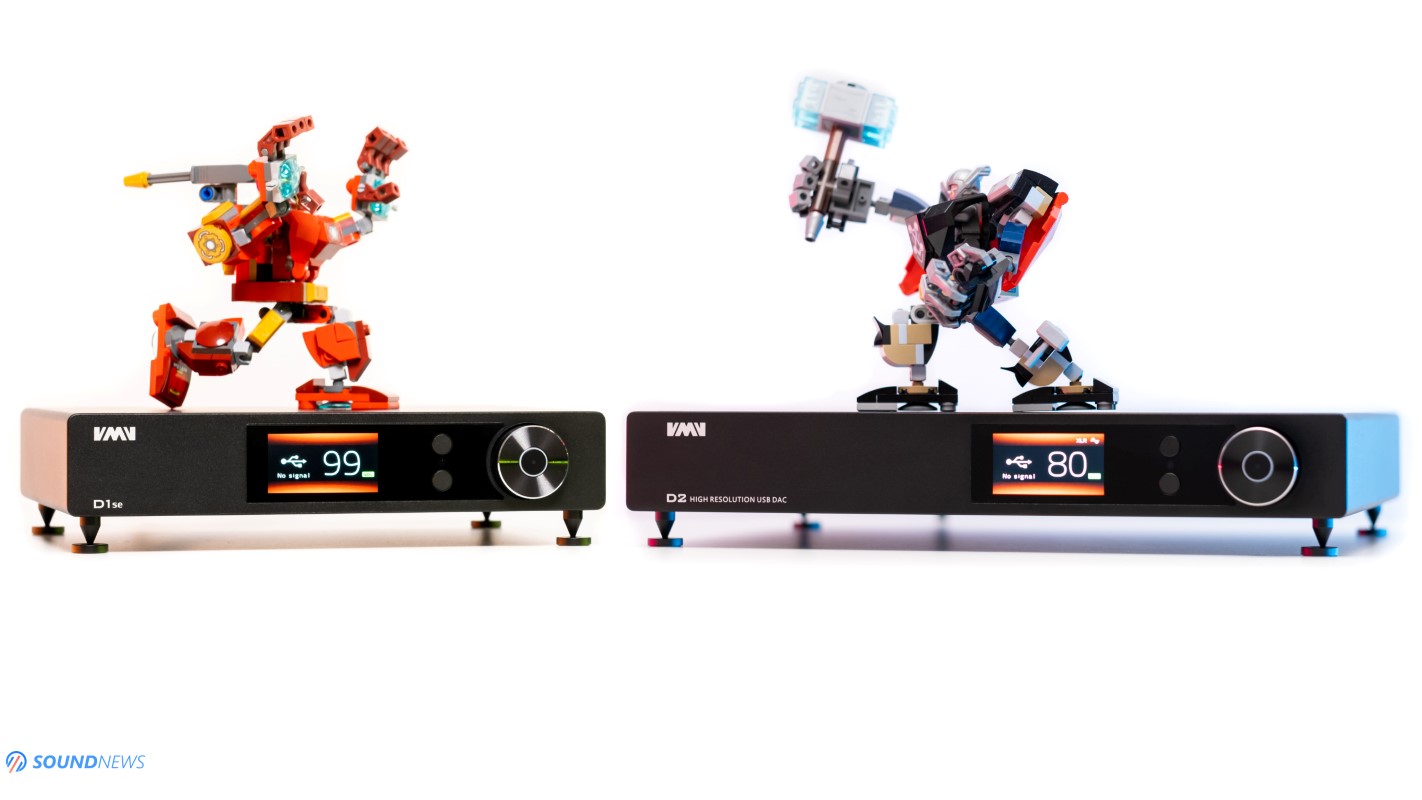
IX. A Comparison
SMSL VMV D2 ($1700) VS SMSL VMV D1SE ($720)
Both are looking more or less the same, their build quality is nearly identical, D2 is just wider, deeper and much heavier. When it comes to features, D2 has an additional digital input (AES/EBU), a clock input, a more advanced UI, it can work as a USB to S/PDIF converter and it was blessed with a higher quality Bluetooth chipset – capable of receiving nicer codecs as LDAC and UAT. The only advantage D1SE has over its bigger sibling is that SMSL developed several sound color options that can add some tube warmth, some richness or improve its leading edges. While D2 doesn’t have those, in its stock form it already oozes a natural tonality plus an impressive set of technicalities.
On the inside things are considerably more interesting, as D1SE was built around a single ESS 9038 PRO converter used in a voltage output mode. LPF stage is built around three OPA1612 op-amps and it uses unknown crystal clocks to me. D2 is a much bigger beast, there is more space inside its case and a higher importance was given to all its components. Instead of one, I see two Noratel transformers, there’s an AK4499 used in a 4-channel mode. There a strong I/V conversion stage and then a similar output stage. Higher quality Accusilicon crystal clocks were used, higher quality voltage regulators, a higher number of them and much better filtering stage. D2 uses some of the best capacitors and transformers money could buy, hence a substantial difference price wise between the two. While, I could see several things to be improved on D1SE, D2 was build more like a no-compromise chip-based converter, hence a $1000 difference between the two.
After warming them up for at least an hour, I sat down with a simple 8 track playlist that covered all technicalities that are so important for me. I volume matched them since D2 offers a higher voltage output and I commenced a longer listening session.
Since Flux Labs Volot and Benchmark HPA4 are offering two pairs of XLR inputs, comparing them was much easier to do. D1SE is highly technical sounding DAC, putting a bigger accent on detail retrieval, speed and impact, putting just a bit more meat on the bone compared to a regular ESS-Sabre converter. By comparison, D2 felt exactly as technical, maybe by a hair more precise and clean sounding to me. On the other hand, D2 stretched the soundstage further and the only limiting factors were my amplifiers and headphones that followed. It wasn’t only bigger sounding, it was more holographic and more believable sounding to me, there was more air passing around and the air bubbles between musical notes felt more substantial. D1SE was no slouch at all, sounding more layered to an SMSL SU-9N for example, but D2 was in another league altogether. When I moved to dynamically intensive music as rock and electronica, D2 infused more naturalness, there is a nicer bonding between musical notes, it felt smoother and by a hair warmer sounding, while presenting a similar technical performance.
With D1SE, aggressive music as heavy metal can be a little fatiguing after about an hour or so, while D2 sounded more organic, it put more life in those guitars, while gently smoothing out the ringing of the cymbals. What’s more interesting is that dynamics themselves were going higher on D2, easier reaching their peaks, releasing a higher engagement factor. While the family resemblance is quite big and both units have plenty of technicalities in common, D2 wanted to impress a lot more with music reproduction more than anything else. It took me and carried over my childhood memories when I was still listening to music through a cassette player. I’m not fond on using this word, but it was more musical and more organic sounding to me. Another striking difference was the bass output, D1SE felt immaculate when it comes to speed and decay, but D2 punched nicer and delivered a heftier bass output quantity wise. It was punchier and harder smalling in there, transforming regular electronica into something impactful and toe-tapping all the time.
While both units are reproducing the whole frequency response impressively well, VMV D2 was slashing some grain and a higher treble ringing, focusing more on treble texture, than on its sharpness and leading edge. D1SE was sometimes merciless with treble intensive music, while D2 made it manageable even with linear amplifiers and headphones. I immensely enjoyed the Audeze LCD-4 with D1SE, while Hifiman Susvara worked nicer with D2, that added more body and weight, transforming a linear sounding headphone into an engaging sounding one.
When I moved them in a loudspeaker setup working as DAC and preamplifier combos, the differences were even bigger as D2 sounded tighter and more controlled. I can only presume that a higher voltage output worked as a passive preamplifier with my Benchmark mono-blocks, as D2 sounded extremely close to the Gold Note’s DS10-PLUS sans its wireless streamer. There was a bigger difference when I’ve added a preamplifier after the D1SE, which wasn’t a big deal with D2, it barely improved or not at all. It seems that a nicer power filtering and a more powerful output stage said their last words, as D2 felt even more engaging and alive sounding in a loudspeaker setup. D1SE wasn’t bland or lifeless, far from that, but I felt that dynamics weren’t flying around my room as effortlessly as D2 was doing so easily.
In the end, I find them pretty close when it comes to detail retrieval, speed and decay, but everything else felt at a higher level when D2 was playing tunes and that is perfectly fine considering the price difference. If you already own the D1SE and you’re using headphones and loudspeakers on a daily basis as I do, then VMV D2 can work as an upgrade path down the road, but only if the rest of the electronics are up to the task. In the end, I believe D1SE is one of the best DAC’s I’ve heard this year below $1000 and I can say the same about D2, being one of the nicest converters I’ve tried below $2000.
If you care a lot more for the act of music listening itself and less for the measurements, then D2 will feel as a substantial upgrade from multiple points of view, getting you to musical nirvana in no time.

My Conclusion
SMSL VMV D2 performed like a top-end converter from multiple points of view. It has an amazing build quality; it covers all digital inputs and offers plenty of features than I’m not spotting on competitor devices. I particularly liked its sound tuning that felt different, to a point of being unique and I hope they will continue using its voicing in the future.
I know that most of you are focusing on your speakers, headphones, maybe on amplifiers, cables or room acoustics. Some are swearing that low-priced digital to analog converters like SMSL SU-9N can’t get any better and that’s perfectly fine. However, I will remind you that everything happening in your stereo or headphone setup, starts with your source. A good source will never limit dynamics, stage size, detail retrieval and it will never increase the noise floor. From a dozen of digital sources I’ve tried in the last two years, the ones that had no cons were counted with three fingers on a hand and SMSL’s D2 seems to be one of them. I was not surprised hearing gobs of details brought to the surface, a vast and expansive soundstage and a punchy low-end delivery, but I was surprised having them all, while putting a higher accent on the act of music listening. Sounding squeaky clean and noiseless isn’t a challenge anymore, but sounding extremely dynamic, yet organic and full-bodied is still a big challenge, especially when it comes to chip-based converters.
This is a highly polished DAC that delivered countless hours of satisfaction, more so than many other converters tested around here and as such, it’s my pleasure awarding it with my highest, Gold Award. It was fully deserved and I wish more manufacturers would put a higher importance to component selection and on actual music listening.

SMSL VMV D2 was kindly provided by the fine gents of Apos Audio, it can be purchased from their web-store by following this link (They offer free shipping in the USA and Canada, free 45-day returns in case you don’t like it, an extra year of warranty and lowest price guarantee). In case you get one, please come back and leave some feedback. I’m curious to know how it performs in your headphone or stereo setup.
PROS:
- The best looking SMSL DAC to date
- Outstanding fit and finish, exquisite unboxing experience
- A lot of care was put in component selection
- Easy to use GUI, lots of options to choose from, cool metallic remote
- Sounds open and wide with every single track, it’s holographic even with crowded music
- Layered and deep sounding even with headphones
- Full-bodied, warm and rich sounding
- One of the nicest midrange I’ve experienced with D/S DACs
- An extended frequency response top to bottom
- Clean, detailed and transparent sounding
- A noiseless background
- Engaging and highly dynamic
- No brightness, no glare, no listening fatigue
- A good selection of digital inputs
- Feels like a substantial upgrade from D1SE
CONS:
- Sound Color option is no more on D2
- Pricey
ASSOCIATED EQUIPMENT:
- DACs: SMSL VMV D2, D1SE, SU-9N, Audiobyte HydraVox & HydraZap, Matrix Audio Element X, Gold Note DS-10 Plus & PSU-10 Evo, Singxer SDA-6 PRO, Musician Aquarius
- DAPs: FiiO M17, M11 Plus, Shanling M8
- Headphone Amps: Flux Lab Acoustics Volot, Ferrum OOR + Hypsos, Benchmark HPA4, Burson Soloist 3X, Musician Andromeda, SMSL SP400, Topping A90, Gustard H16
- Preamps: Musician Monoceros, Benchmark HPA4, Topping PRE90
- Power Amps: Benchmark AHB2 (x2), KECES S300, SMSL SA400, Burson Timekeeper 3i
- Loudspeakers: KEF Reference 3, Sound of Eden Crescendo UNO, Natural Sound NS-17
- IEMs: FiiO FH9, FH7, FD7, FA9, Meze Rai Penta, LittleDot Cu KIS, Hiby Crystal 6, 7Hz Timeless & others
- Portable headphones: Sony WH1000-XM4, Sennheiser Momentum 2, Meze 99 Classics
- Full-sized headphones: Hifiman Susvara, HE1000SE, Arya Stealth, HE400SE, Audeze LCD-4, Erzetich Phobos 2021, Erzetich Mania, Kennerton Rognir, Magni, Gjallarhorn, Vali, M12S, Apos Caspian, Sendy Peacock & Aiva
- Interconnects: QED Reference (x2), Topping TCX1 (x2)
- Speaker cables: Kimber PR8, Audioquest Type4
- Power Cables: Isotek EVO3 Premier (x3)
- Balanced Isolation Power Conditioners: PLiXiR Elite BAC1500 (stereo setup), Elite BAC400 (headphone setup)






